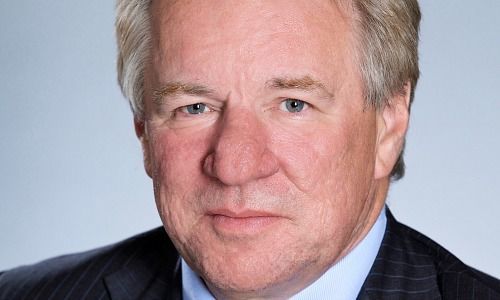«I have been asked since we announced the merger of Aberdeen and Standard Life whether this is an offensive or defensive decision. It is a bit of both,» Martin Gilbert writes in an essay for finews.asia.
Martin Gilbert, is the Co-Founder and Chief Executive of Aberdeen Asset Management
Any asset manager which denies that it faces challenges has its head in the sand. The industry is polarising with boutiques at one end and large multi-service providers at the other. Those stuck in the middle are likely to be left behind due to industry headwinds, such as the rise of passive investing, downward pressure on fees and increased regulatory pressures.
Our proposed merger will put the combined business firmly into that bracket of major full service asset management providers with a truly global footprint both in terms of investment capabilities and client coverage.
Minimal Overlap
But the cornerstone of the deal is the extent to which these two businesses complement each other and by putting them together we can continue to grow and better serve our clients around the world for years to come. It was this factor more than any other which meant that the deal made sense to my colleagues and I on the Aberdeen Board.
Our businesses complement each other in two key respects: a minimal overlap in investment capabilities and significantly different distribution strengths resulting in a business which is highly diversified by asset class, clients and revenues.
Five Investment Capabilities
The merger will create an asset manager that has five broad investment capabilities which have scale and financial strength – equities (both active and quant), fixed income, solutions, property and alternatives. This will enable the firm to ensure that it can attract and retain the best talent and also invest in the business. The combined firm will have over 1000 investment professionals operating out of 20 countries.
The increased breadth of investment capability will provide clients with more choice. Various pension funds, insurers and financial institutions (banks/wealth managers) are increasingly looking to interact with a smaller number of fund managers from whom they buy a wider range of strategies. Many of the US fund management giants have been very successful at marketing multiple investment strategies to clients.
These Are Growth Areas
I am particularly excited that the merger will greatly increase our presence in next generation investment capabilities, such as solutions, smart beta and alternatives. These are growth areas within asset management and we will be able to compete toe-to-toe with global groups, as we already do within equities and fixed income.
Multi-asset investing – constructing portfolios offering exposure to equities, bonds, property and alternatives – is becoming increasingly important. Whether it is constructing bespoke solutions for institutional investors, such as insurers, or offering a range of portfolios to help individuals build a pension pot and invest in specifically designed post-retirement investment products.
Expanding Client Relationships
From a geographic and channel perspective, the combined group will have 50 unique distribution centres and clients in over 80 countries and complementary strengths in institutional, wholesale, workplace and retail channels.
In summary, we will be able to draw on the investment and distribution strengths of both companies to consolidate and grow our position in the U.K. whilst deepening and expanding our client relationships internationally.
Unprecedented Period
The asset management industry is facing an unprecedented period of disruption and consolidation. Standing still is not an option. Those who succeed will be those who embrace change and position themselves to meet the changing needs of clients.


























